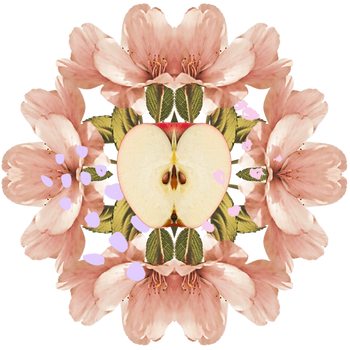Willow

A plant of pragmatism. Long seen as a symbol of sorrow due to its drooping branches, the willow also tells a story of resilience, healing and strength. One of the few trees that can be bent without breaking, willow trees are known for their association with crafts and weaving, but they also have a long history of healing. The medicinal properties of willow bark, which contain a chemical used in aspirin, have been used for centuries.
The story
willow make-up
In wet soil, the willow is ludicrously easy to grow; cut a stem, pop it in wet ground and … er ... that’s it. By a riverbank, the willow’s mass of tangled roots prevent erosion and provide shelter for wildlife.
origins
In English, ‘willowy’ can be used to describe anything particularly slender and flexible. Since prehistoric times, thin willow stems, or ‘osiers’, have been woven into baskets and boat frames, fences and fish traps. Osier-beds once stretched along the banks of European waterways to supply the trade. Wicker takes its name from the Swedish word for willow, and strong, light, wickerwork is used for traditional hampers and even for the baskets carrying passengers under hot-air balloons.
A recent trend for organic artworks – sculptures and even furniture woven from the stems and branches of living willows – can feel quite magical, which is just right for a plant that has had long association with superstition.
the weeping willow
One willow variety, the ‘weeping’ willow – got its name from a mistranslation of Psalm 137: ‘By the rivers of Babylon, There, we sat down and wept, When we remembered Zion, Upon the willows in the midst, We hung our harps.’ The tree in question was probably the Euphrates poplar, not a willow but the association between drooping willows and sorrow stuck. Throughout Europe in the middle-ages, mourners wore a wreath or hat from willow and eventually the gloomy connotations also came to include a lover's rejection.
willow and sadness
Superstition has created a link between willow and sadness, but it has a connection with pain that is based on good chemistry. Ancient Egyptians were already using willow to treat fever and headaches and in about 400 BC, Hippocrates prescribed willow bark for rheumatism. We now know that willow bark contains the plant hormone salicylic acid.
In the mid-19th century, salicylic acid was finally isolated and turned into what is now a ubiquitous treatment for fevers and frets, consumed in about 100 billion pills a year. That drug is aspirin.
Explore more
Want to delve deeper into the world of trees and plants?
Check out author Jon Drori's beautifully illustrated works, Around the World in 80 Trees and Around the World in 80 Plants - intertwining botany with history, culture and folklore. Both are available from all booksellers or via Jon’s website. Jon has very kindly offered a 25% discount with the voucher code 80JONDRORI.
Listen to Salix Babylonica, original music by Fizz Margereson, alongside spoken text by Jon Drori created in response to the Willow, Iconic Plant and commissioned especially for PoliNations. Narration by Jade Samuels. To listen to the music by itself. click the link further up the page.
Illustrations by Lucille Clerc.









